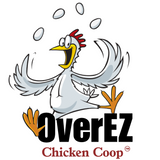What It Is, How to Spot It, and How to Help Your Hen Heal
If you’ve ever noticed one of your chickens limping, favoring one foot, or just not strutting around like her usual self, you might be dealing with a common chicken ailment called bumblefoot. Don’t let the cute name fool you — this condition can become serious if not treated quickly. Let’s break down what it is, how it happens, and what you can do to prevent it.
🦶 What Is Bumblefoot?
Bumblefoot (also known as pododermatitis) is essentially an infection on the bottom of a chicken’s foot. It usually starts when a small cut, splinter, or scrape allows bacteria to sneak in. Because chickens spend their days scratching, perching, and exploring, it doesn’t take much for that little wound to become a big problem.
Once bacteria (typically Staphylococcus) get under the skin, a hard, dark scab can form — that’s the “bumble.” Left untreated, it can cause swelling, pain, and lameness.
👀 Signs to Watch For
Catching bumblefoot early is the best way to keep your flock healthy. Here’s what to look out for:
-
Limping or favoring one leg
-
Swelling or redness on the bottom of the foot
-
A dark, circular scab or lump
-
Reluctance to perch or walk
-
Warmth in the foot
If you notice any of these signs, it’s time to give your hen a quick health check.
🩹 Treatment Basics
For mild cases, early intervention can make a world of difference.
-
Clean the foot with warm water and an antiseptic solution.
-
Soak the foot in warm Epsom salt water to soften the scab.
-
Apply a vet-approved antibiotic ointment and wrap the foot with gauze and vet wrap.
-
Keep her in a clean, dry area for a few days to heal.
If the swelling is severe or the infection seems deep, it’s best to consult your veterinarian — they may need to safely remove the infected core or prescribe antibiotics.
🐣 Prevention Is Key
Bumblefoot is often caused by rough landings, dirty bedding, or hard surfaces. The good news? It’s totally preventable with a few easy habits:
-
Use soft, dry bedding like hemp or coffee grounds to cushion your flock’s feet.
-
Keep roosts smooth and not too high to reduce impact.
-
Check feet regularly — early detection saves time and stress.
-
Maintain dry coop conditions to prevent bacteria growth.
❤️ Healthy Feet, Happy Hens
Just like us, chickens rely on their feet for everything they do — scratching for bugs, hopping onto roosts, and running toward treats. Keeping those feet healthy helps your hens stay active, comfortable, and cluckin’ along for years to come.
Because when your flock feels good from beak to talon, everyone’s happier — including you.

